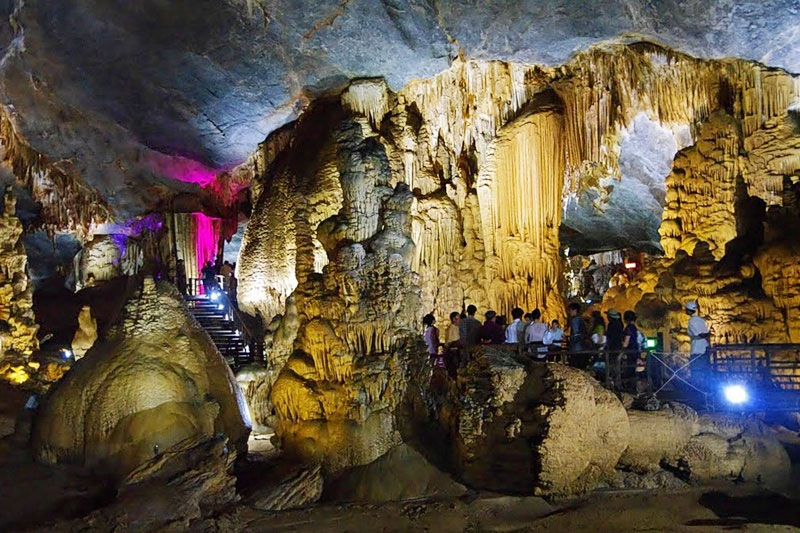Highlights
DALAT IS IDEAL PLACE FOR WATCHING BIRD
Dalat is not only famous for its cool climate and scenic beauty as: pine forests, lakes, mountains and waterfalls but also the ideal place for bird watching activity thanks to diverse flora and fauna. Being identified by BirdLife International, The Dalat Plateau is one of the five endemic bird areas (EBAs) in Vietnam. Habitats are mixture of coniferous (dominated by Pinus kesiya), montane evergreen and secondary forest. Three bird species, Collared Laughingthrush, Grey-crowned Crocias and Vietnamese Greenfinch, are only to be found within this EBA. The Dalat Plateau also has distinct subspecies of Spot-breasted Laughingthrush (considered by some authorities as a separate species: Orange-breasted Laughingthrush), Cutia, Rufous-backed and Black-headed Sibias, Blue-winged Minla, Grey-headed Parrotbill and Black-throated Sunbird.
DAY 1: The Birds of Ta Nung valley & Tuyen Lam Lake
Dalat city is a very comfortable base from which to explore the nearby forest areas of the Da Lat/Langbian Plateau. The plateau holds a number of local species, some of which are only found there, or are only shared with a small area of Cambodia or Laos. We will begin our exploration of this fascinating area with a foray down to the Ta Nung Valley, made famous in the nineties for the rediscovery of the Vietnamese endemic Gray-crowned Crocias, which remains regularly seen there. Any passing “bird wave” will be scoured for this bird hiding within. Ta Nung will also provide a further chance at Orange-breasted Laughingthrush, as well as other local species, like White-cheeked Laughingthrush and Indochinese Green Magpie. Other birds we will be seeking at Ta Nung will include Black-headed and Rufous-backed Sibias, the local (soon-to-be-split?) race of Black-throated Sunbird, Mrs. Gould’s Sunbird, Streaked Spiderhunter, White-spectacled Warbler, and Red-billed Scimitar-Babbler.
In the afternoon we will head out from our hotel to another very local site, Tuyen Lam lake, a scenic lake surrounded by pine woodland, which holds the possibility of Vietnamese Greenfinch, the endemic race (species?) of Red Crossbill, Slender-billed Oriole, Chestnut-vented Nuthatch, Burmese Shrike, and Black-collared Starling. This and the following two nights will be spent in the city of Da Lat. This city is a long-established tourist attraction famed for its scenic setting and pleasantly moderate climate, and where a French Hill Station was constructed in the early part of twentieth century.
DAY 2: The Birds of Langbiang Mountain & Bidoup Nui Ba National Park
Dalat city is a very comfortable base from which to explore the nearby forest areas of the Da Lat/Langbian Plateau. The plateau holds a number of local species, some of which are only found there, or are only shared with a small area of Cambodia or Laos. We will begin our exploration of this fascinating area with a foray down to the Ta Nung Valley, made famous in the nineties for the rediscovery of the Vietnamese endemic Gray-crowned Crocias, which remains regularly seen there. Any passing “bird wave” will be scoured for this bird hiding within. Ta Nung will also provide a further chance at Orange-breasted Laughingthrush, as well as other local species, like White-cheeked Laughingthrush and Indochinese Green Magpie. Other birds we will be seeking at Ta Nung will include Black-headed and Rufous-backed Sibias, the local (soon-to-be-split?) race of Black-throated Sunbird, Mrs. Gould’s Sunbird, Streaked Spiderhunter, White-spectacled Warbler, and Red-billed Scimitar-Babbler.
In the afternoon we will head out from our hotel to another very local site, Tuyen Lam lake, a scenic lake surrounded by pine woodland, which holds the possibility of Vietnamese Greenfinch, the endemic race (species?) of Red Crossbill, Slender-billed Oriole, Chestnut-vented Nuthatch, Burmese Shrike, and Black-collared Starling. This and the following two nights will be spent in the city of Da Lat. This city is a long-established tourist attraction famed for its scenic setting and pleasantly moderate climate, and where a French Hill Station was constructed in the early part of twentieth century.




















































































































































































